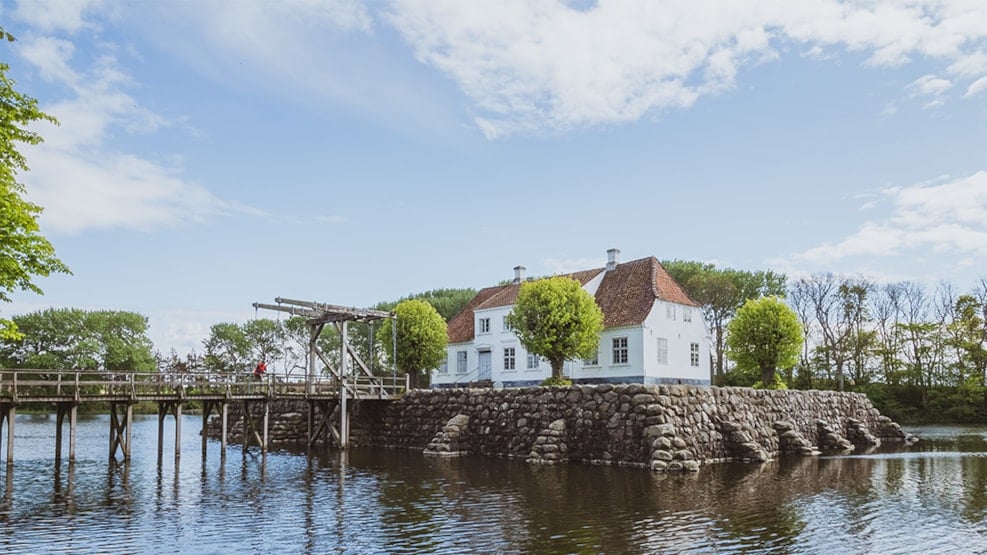
Geopark: Søbygaard
The manor Søbygaard was constructed in about 1580 by Duke Hans den Yngre (1545–1622)
When the chivalry of Schleswig-Holstein in 1564 refused to let him participate in governing the duchies, Hans den Yngre devoted all his energy to managing manors. He was so successful that he, shortly before his death, was probably the largest food producer in the duchies. Søbygaard was a small part of the Duke’s extensive possessions in Schleswig and Holstein. On Ærø, in addition to Søbygaard, he also built the manor houses Gråsten as well as Gudsgave, which no longer exists.
When his son Duke Christian of Ærø died in 1633, the duchy Ærø was divided into three smaller duchies and Duke Joachim Ernst of Plön inherited Søbygaard. In 1729, Frederick IV as the Duke of Schleswig, traded Søbygaard and Gudsgave.
In 1772, Søbygaard was sold to Christian Hansen, representative for the county administrator, and thus it became an ordinary, albeit large, manor on Ærø. The manor was purchased in 1991 by Den Selvejende Institution Søbygaard (the Independent Institution Søbygaard), which has since managed the extensive renovations and the reestablishment of the moat.
Søbygaard is constructed on two man-made earth banks. The main building was originally constructed as a two-storey, half-timbered building with a stair turret toward the courtyard. The current look of the building is the result of extensive modifications in the mid-1700s and mid-1800s.